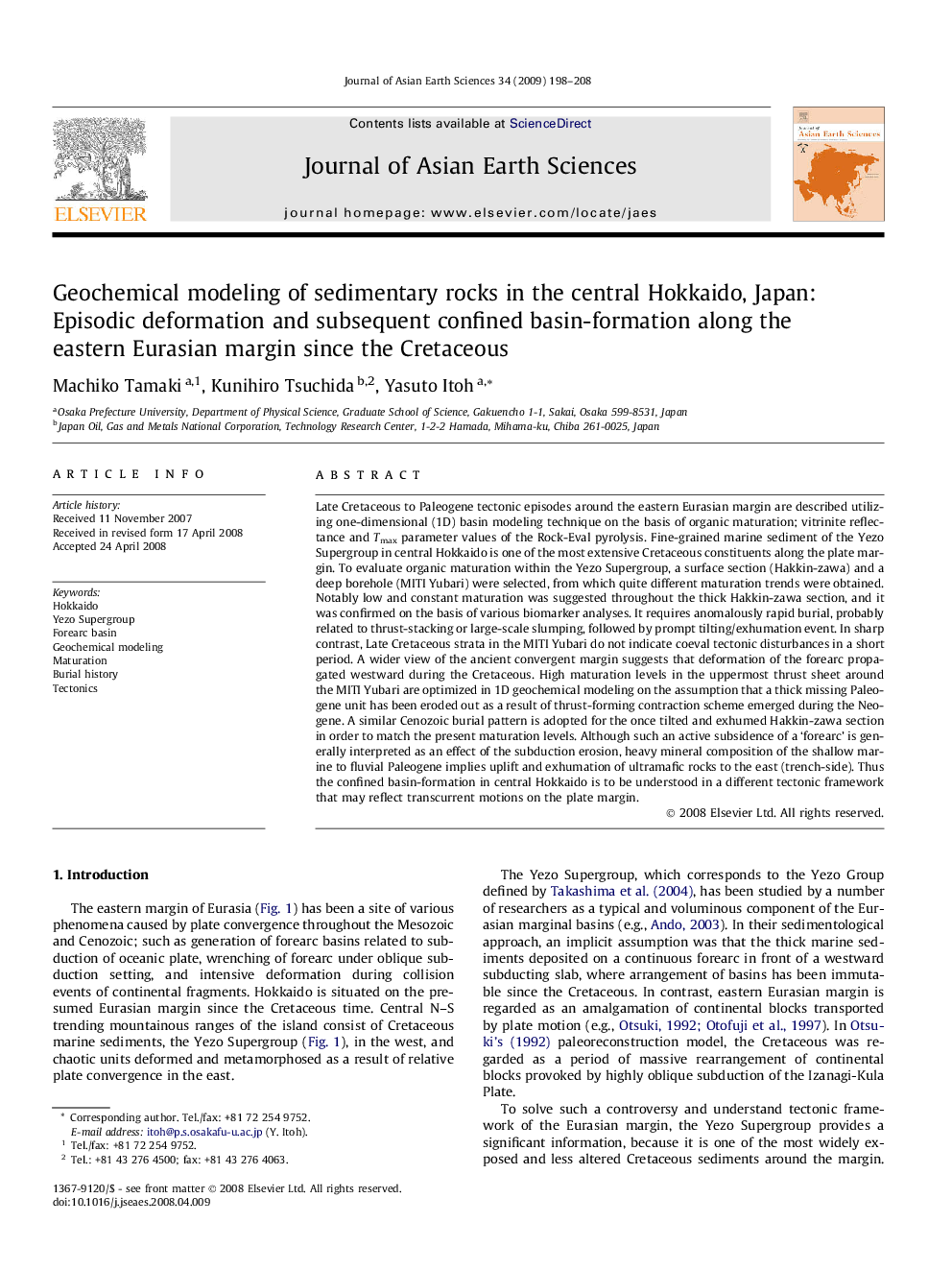| کد مقاله | کد نشریه | سال انتشار | مقاله انگلیسی | نسخه تمام متن |
|---|---|---|---|---|
| 4732282 | 1356854 | 2009 | 11 صفحه PDF | دانلود رایگان |

Late Cretaceous to Paleogene tectonic episodes around the eastern Eurasian margin are described utilizing one-dimensional (1D) basin modeling technique on the basis of organic maturation; vitrinite reflectance and Tmax parameter values of the Rock-Eval pyrolysis. Fine-grained marine sediment of the Yezo Supergroup in central Hokkaido is one of the most extensive Cretaceous constituents along the plate margin. To evaluate organic maturation within the Yezo Supergroup, a surface section (Hakkin-zawa) and a deep borehole (MITI Yubari) were selected, from which quite different maturation trends were obtained. Notably low and constant maturation was suggested throughout the thick Hakkin-zawa section, and it was confirmed on the basis of various biomarker analyses. It requires anomalously rapid burial, probably related to thrust-stacking or large-scale slumping, followed by prompt tilting/exhumation event. In sharp contrast, Late Cretaceous strata in the MITI Yubari do not indicate coeval tectonic disturbances in a short period. A wider view of the ancient convergent margin suggests that deformation of the forearc propagated westward during the Cretaceous. High maturation levels in the uppermost thrust sheet around the MITI Yubari are optimized in 1D geochemical modeling on the assumption that a thick missing Paleogene unit has been eroded out as a result of thrust-forming contraction scheme emerged during the Neogene. A similar Cenozoic burial pattern is adopted for the once tilted and exhumed Hakkin-zawa section in order to match the present maturation levels. Although such an active subsidence of a ‘forearc’ is generally interpreted as an effect of the subduction erosion, heavy mineral composition of the shallow marine to fluvial Paleogene implies uplift and exhumation of ultramafic rocks to the east (trench-side). Thus the confined basin-formation in central Hokkaido is to be understood in a different tectonic framework that may reflect transcurrent motions on the plate margin.
Journal: Journal of Asian Earth Sciences - Volume 34, Issue 2, February 2009, Pages 198–208